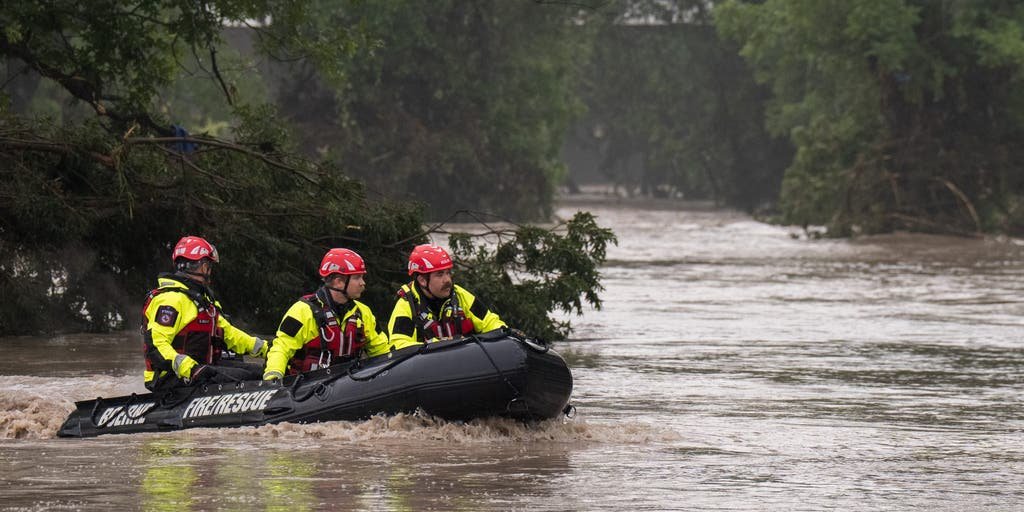Devastating Floods Strike Central Texas: A Deep Dive into Nature’s Wrath
A family camping along the banks of the San Gabriel River in Georgetown, Texas, awoke to the sound of rushing water—first a whisper, then a deafening roar. In a matter of minutes, the quiet morning turned chaotic as torrential rains transformed the gentle river into a raging torrent, sweeping away tents, vehicles, and lives. This scene unfolded on the Fourth of July, a day typically marked by fireworks and festivity, but instead turned into a harrowing tale of survival and loss.
The Aftermath of a Natural Catastrophe
As Central Texas grapples with the aftermath of catastrophic flooding, the situation remains dire. Search and rescue teams have been deployed throughout the region, scouring the flooded rivers, rural areas, and campsites for missing individuals. Authorities report that at least 27 people lost their lives in the flood, with another 27 still unaccounted for. Much of the devastation is centered in Kerr County, where a girls’ summer camp, Camp Mystic, faced a brutal reality as its participants were caught in nature’s fury.
“This crisis underscores the unpredictability of our climate,” explains Dr. Emily Carter, a climatologist at the University of Texas at Austin. “Studies show that climate change is intensifying weather patterns such as tropical moisture influxes, which makes Texas increasingly vulnerable to extreme rainfall events.” The recent flooding has been compounded by a lingering moisture field, once associated with Tropical Storm Barry, leading to heavy rainfall and flash flood emergencies across multiple counties.
Understanding the Floods: Key Factors
- Unprecedented Rainfall: Rainfall totals exceeded 12 inches in some areas within 24 hours, leading to rivers overflowing their banks.
- Rural Geography: Many missing persons are feared to have been camping or engaging in recreational activities, making the search more complicated.
- Structural Vulnerabilities: While dams are in place, local infrastructure struggles to cope with the volume of water, making flash flood warnings essential.
Texas Governor Greg Abbott has committed resources to the ongoing rescue efforts, expressing, “We are determined to leave no stone unturned. Hundreds of local, state, and federal personnel are mobilized to find our missing friends and loved ones.” With a disaster declaration issued, communities bracing for further rain remain cautious; additional flooding risks loom as weather forecasts predict persistent showers into the coming week.
A Historical Lens: Echoes of the Past
This flooding episode has drawn unsettling parallels to the notorious floods of 1987, when similar slow-moving thunderstorms wreaked havoc across the Guadalupe River basin, taking multiple lives and displacing hundreds. “Historical data indicates a frightening trend: our rainfall events are becoming more severe and less predictable,” remarks Dr. Samuel Lee, an environmental historian. “Understanding this history is key to preparing for future catastrophes.”
As the floodwaters begin to recede, stark images of the destruction left in their wake emerge—a landscape painted in shades of despair. Families sift through ruined belongings, while emergency crews tirelessly work to ensure no one is left behind. The trauma is palpable, echoing in apprehensive hearts as communities rally to support one another.
Community Response
Citizens are banding together. Local churches, schools, and community organizations are setting up shelters and relief centers to aid those affected. “This is a time for unity,” shares Pastor Linda Martinez of a local church. “We may be facing devastation, but we are also witnessing incredible resilience.” Experts emphasize that swift and coordinated responses are critical in mitigating the long-term impacts of natural disasters. Community-driven recovery initiatives have shown promise in building social bonds, enabling survivors to regain a sense of normalcy.
Future Implications
As communities begin to rebuild, questions arise regarding preparedness for future flooding. Dr. Mark Jensen, a civil engineer specializing in hydrology, advocates for improved flood management systems. He details, “Innovations in infrastructure, extensive public education regarding flood risks, and strategic land use planning can significantly reduce future vulnerabilities.”
Areas still standing witness to nature’s ferocity now face a choice: to rebuild as they were or to innovate, adapting to the new reality of climate change-induced weather patterns. In this duality lies both hope and caution, as Texas residents lay the groundwork for future resilience while grappling with recent losses.
The floodwaters have receded, but the emotional and material impact lingers. Beyond the statistics and the headlines, personal stories of sorrow and strength emerge—each one a testament to the human spirit’s resilience in the face of nature’s wrath. As the days turn into weeks, and recovery efforts continue, the hope echoes through Central Texas: together, we will rise again.









